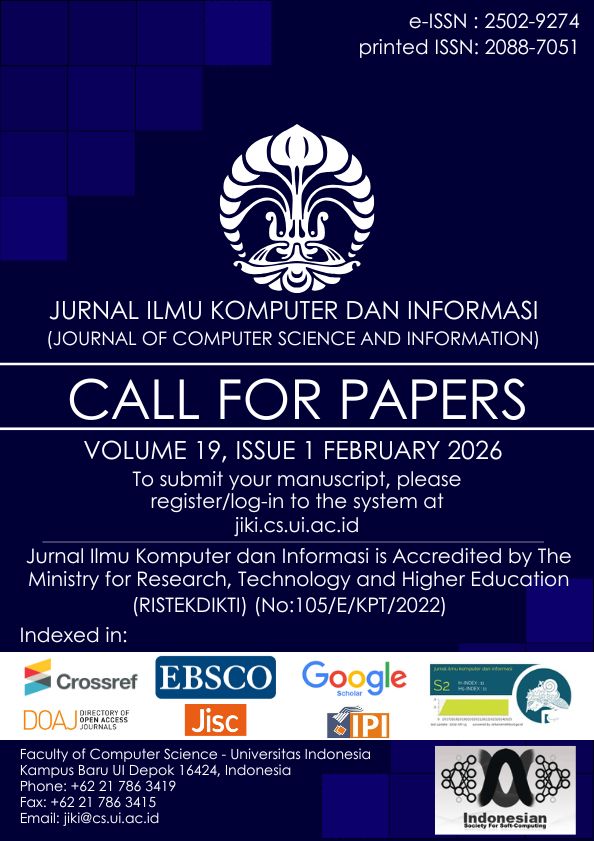Optimization of 2D-CNN Setting for the classification of covid disease using Lung CT Scan
DOI:
https://doi.org/10.21609/jiki.v15i2.1083Keywords:
2D-CNN, Covid, Lung CT Scan, classificationAbstract
RT-PCR is considered the best diagnostic tool. Previous studies have demonstrated the reliability of CNN in classifying classifications, but CNN requires a lot of training data. Meanwhile, at the CT Scan clinic, patients are limited. Therefore, exploration of 2D-CNN settings is proposed to optimize CNN performance on limited data. We compare: (1) activation models, (2) output shapes per layer, (3) dropout layers, and (4) early stopping values. The test results show that RELU activation is better than Sigmoid. Rescaling (128x128) is better for scala (64x64) and (256x256) which affects the output shape model of each layer. In this learning stage, the use of dropouts in the CNN architecture achieves robust accuracy than the architecture that ignores dropouts. The use of 15 early stoppings is better than other values compared. 20 images of pneumonia and 20 images of covid have been tested using the proposed method and achieved 87.50% accuracy, 80.00% precision, 100% recall, and 99.89% F1-Score. Our method is superior to the the comparison method in terms of accuracy, precision, recall, and f1-score, which achieves 85%, 70%, 100%, and 82.35%, respectively.
Downloads
Additional Files
Published
How to Cite
Issue
Section
License
Authors who publish with this journal agree to the following terms:
- Authors retain copyright and grant the journal right of first publication with the work simultaneously licensed under a Creative Commons Attribution License that allows others to share the work with an acknowledgement of the work's authorship and initial publication in this journal.
- Authors are able to enter into separate, additional contractual arrangements for the non-exclusive distribution of the journal's published version of the work (e.g., post it to an institutional repository or publish it in a book), with an acknowledgement of its initial publication in this journal.
- Authors are permitted and encouraged to post their work online (e.g., in institutional repositories or on their website) prior to and during the submission process, as it can lead to productive exchanges, as well as earlier and greater citation of published work (See The Effect of Open Access).











